KEY WRITING SKILLS

learning goals
Understand Writing Techniques: Learn essential writing techniques and how to apply them in different contexts.
Improve Grammar and Structure: Enhance your grammar and sentence structure for clearer communication.
Develop Creative Writing: Foster creativity and originality in your writing.
Apply Real-World Writing Skills: Use writing skills in real-world applications and scenarios.
The Basics of Writing
Understand the Importance of Planning, Drafting, and Revising
PLANNING:
Importance: Planning is the first and most crucial step in the writing process. It helps you organize your thoughts, decide on the purpose of your writing, and outline the main points you want to cover.
How to Plan: Start by brainstorming ideas and noting down key points. Create an outline to structure your writing logically. Decide on the main thesis or argument, and outline the introduction, body paragraphs, and conclusion.
DRAFTING:
Importance: Drafting is the process of getting your ideas down on paper. It is the first version of your writing where you focus on expanding your outline into full sentences and paragraphs.
How to Draft: Write freely based on your outline without worrying too much about grammar or spelling. Focus on expressing your ideas and developing your argument. Don’t be afraid to let your thoughts flow, knowing that you will revise and refine your work later.
REVISING:
Importance: Revising involves reviewing and improving your draft. It helps you refine your ideas, improve clarity, and enhance the overall quality of your writing.
How to Revise: Read through your draft multiple times. Look for areas where your argument can be strengthened, ensure that your ideas flow logically, and check that each paragraph supports your thesis. Make necessary changes to improve clarity, coherence, and overall effectiveness.
Correct Grammar Usage and Sentence Structure
GRAMMAR USAGE
Importance: Correct grammar is essential for clear and effective communication. It ensures that your writing is understood as intended and adds to your credibility as a writer.
Key Grammar Points: Pay attention to verb tenses, subject-verb agreement, punctuation, and proper use of articles and prepositions. Use correct spelling and avoid common grammatical errors.
SENTENCE STRUCTURE
Importance: Good sentence structure contributes to the readability and flow of your writing. It helps to convey your ideas clearly and keeps the reader engaged.
How to Structure Sentences: Use a variety of sentence types (simple, compound, complex) to add interest and avoid monotony. Ensure each sentence has a subject and a predicate. Combine short sentences to avoid choppiness and break up long sentences to avoid complexity.
Clarity and Coherence in Writing
CLARITY
Importance: Clear writing helps your readers understand your message without confusion. It involves using precise language and avoiding ambiguity.
How to Achieve Clarity: Use specific and concrete words rather than vague or abstract terms. Avoid jargon and overly complex vocabulary. Be direct and to the point, eliminating unnecessary words and phrases.
COHERENCE
Importance: Coherent writing ensures that your ideas flow logically from one to the next. It helps readers follow your argument and understand how your points are connected.
How to Achieve Coherence: Use transition words and phrases to link ideas and paragraphs. Ensure each paragraph focuses on a single main idea that supports your thesis. Arrange your points in a logical order, whether chronological, spatial or by importance.
Sample Application
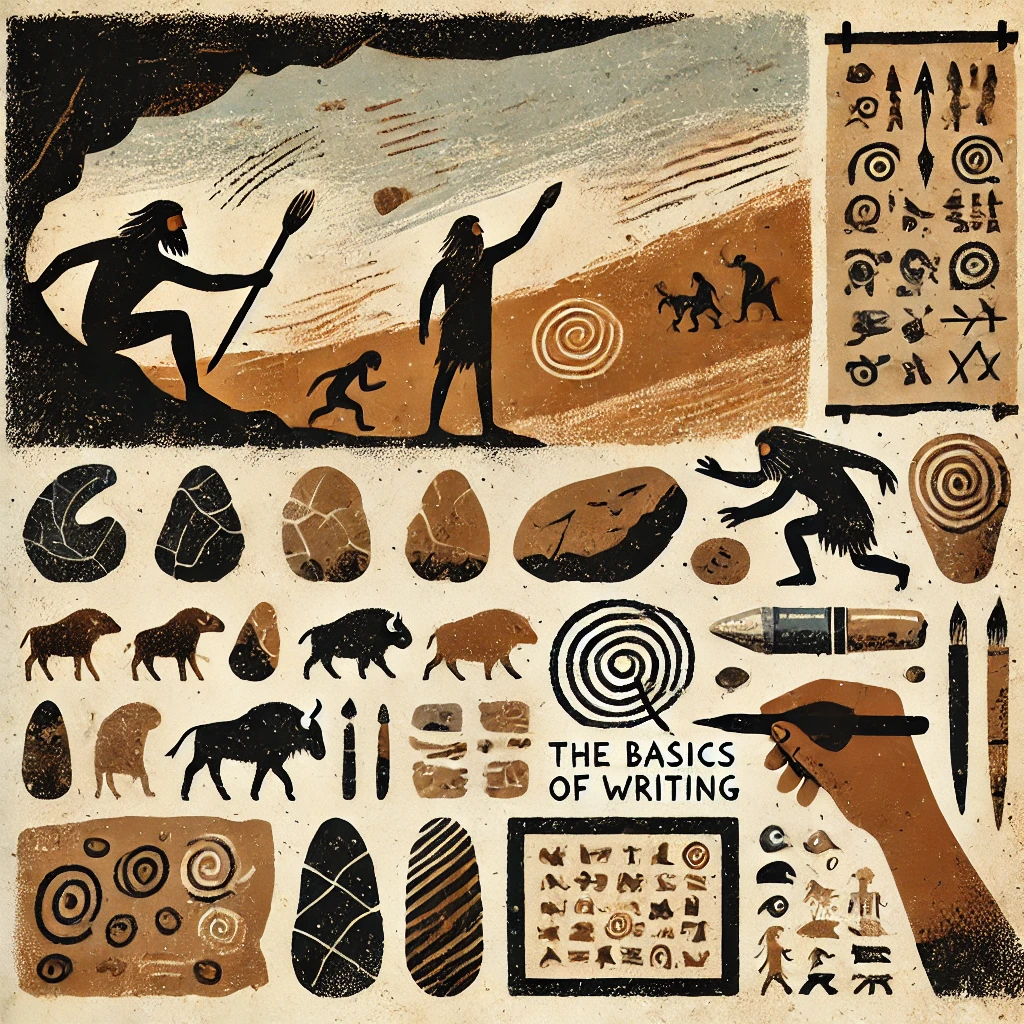
Planning:
- Brainstorm Ideas: Benefits of recycling, environmental impact, economic advantages, steps to recycle effectively.
- Outline:
- Introduction: Introduce the topic and state the thesis.
- Body Paragraphs:
- Paragraph 1: Environmental benefits of recycling.
- Paragraph 2: Economic advantages of recycling.
- Paragraph 3: Practical steps to start recycling.
- Conclusion: Summarize the main points and restate the thesis.
Drafting:
- Introduction: “Recycling is a crucial practice that benefits both the environment and the economy. By reusing materials, we reduce waste, save resources, and create a sustainable future. This essay explores the importance of recycling and provides practical steps to get started.”
- Body Paragraph 1: “Firstly, recycling helps to protect the environment. By reprocessing used materials, we reduce the need for new raw materials, thus conserving natural resources…”
- Body Paragraph 2: “Secondly, recycling has significant economic benefits. It creates jobs in the recycling and manufacturing industries, and saves money for consumers and businesses by reducing disposal costs…”
- Body Paragraph 3: “To start recycling, begin by separating your waste into recyclable and non-recyclable materials. Familiarize yourself with your local recycling program and follow the guidelines for sorting and cleaning recyclables…”
Revising:
- Check Clarity: Ensure each sentence clearly conveys its intended meaning.
- Improve Coherence: Add transition phrases like “In addition,” “Moreover,” and “As a result” to link ideas between paragraphs.
- Refine Grammar and Structure: Correct any grammatical errors and vary sentence structures to improve readability.
Learning Activities
Planning and Drafting
Objective: Learn to plan and draft a piece of writing.
Instructions:
- Topic Selection: Choose a topic to write about.
- Planning: Outline your main ideas and organize them logically.
- Drafting: Write a first draft based on your outline.
- Peer Review: Exchange drafts with a classmate and provide feedback.
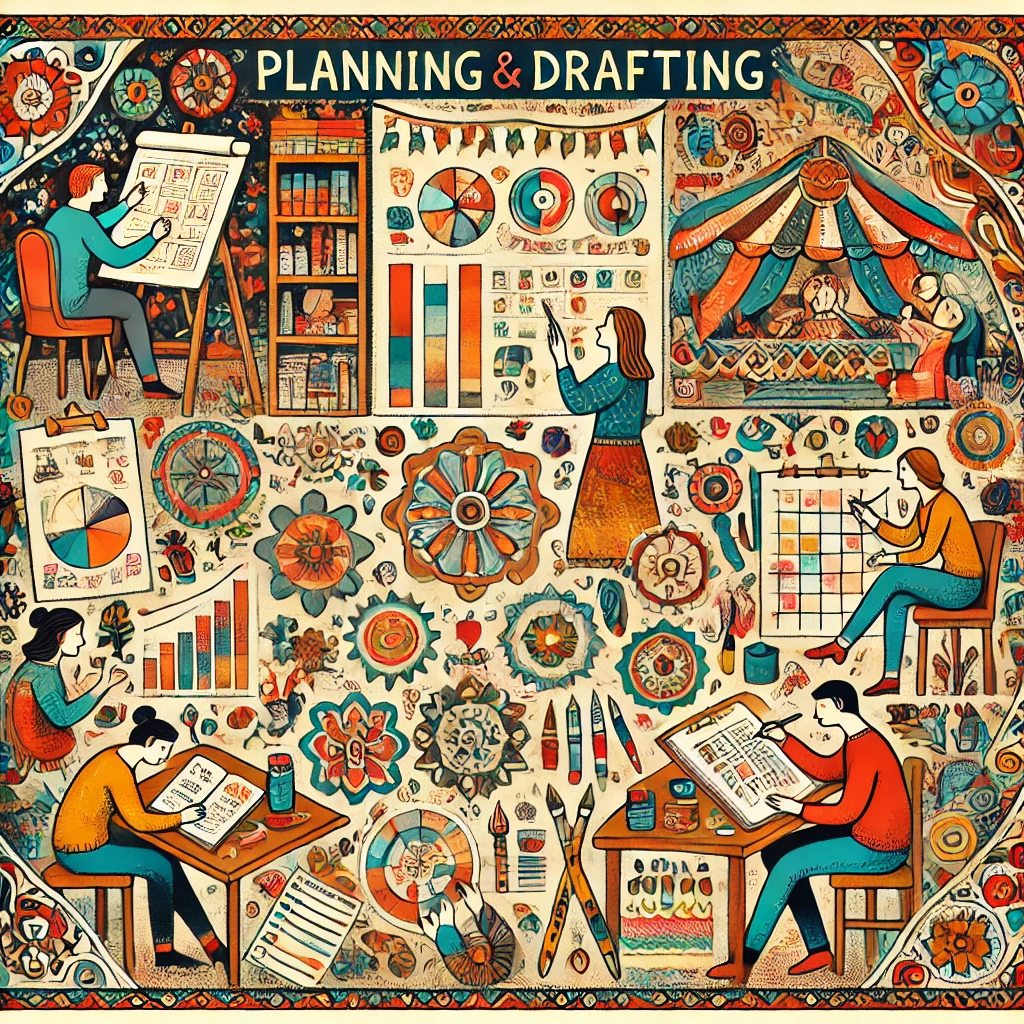
Grammar and Sentence Structure Exercise
Objective: Improve grammar and sentence structure.
Instructions:
- Worksheet: Complete a worksheet with sentences that need grammar corrections.
- Group Discussion: Discuss the corrections with your group.
- Rewrite: Rewrite the sentences correctly and share them with the class.

DESCRIPTIVE, PERSUASIVE, AND NARRATIVE WRITING
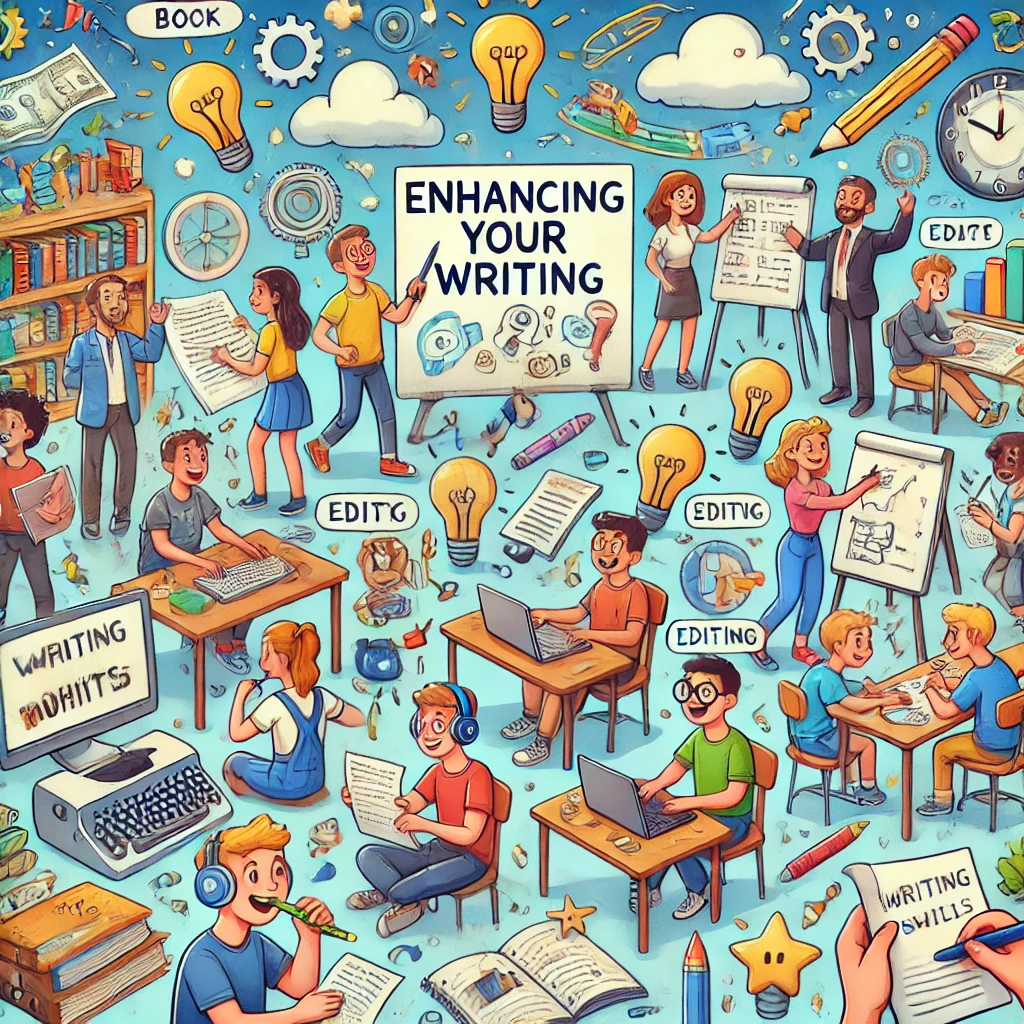
By mastering descriptive, persuasive, and narrative writing, you can enhance your ability to communicate effectively and creatively. These techniques are essential for various writing tasks, from crafting compelling stories to convincing readers to adopt your viewpoint. By practicing and applying these methods, you will become a more versatile and skilled writer.
DESCRIPTIVE WRITING
Definition:
- Descriptive writing involves using detailed observations and sensory language to create vivid images in the reader’s mind. It aims to paint a picture with words, making the scene, character, or object come alive.
Key Techniques
Sensory Details:
Incorporate details related to the five senses (sight, sound, smell, taste, touch) to make your descriptions more immersive.
Figurative Language:
Use similes, metaphors, and personification to add depth and creativity to your descriptions.
Specificity:
Use specific and precise language to describe objects, people, and scenes accurately.
Show, Don’t Tell:
Instead of simply stating facts, show the reader through detailed descriptions and actions.
Examples
Sight: “The sunset painted the sky with hues of orange, pink, and purple, casting a golden glow over the tranquil lake.”
Sound: “The leaves rustled in the wind, whispering secrets to one another as the branches swayed gently.”
Smell: “The aroma of freshly baked bread wafted through the air, filling the kitchen with a warm, comforting scent.”
Taste: “The chocolate cake melted in my mouth, its rich, velvety texture a perfect blend of sweetness and decadence.”
Touch: “The cat’s fur was soft and silky under my fingers, its warmth a soothing presence on my lap.”
APPLICATIONS
Sample Applications
Creative Writing: Enhances short stories, poems, and novels by creating vivid scenes and characters.
Travel Writing: Brings locations to life, making readers feel as if they are experiencing the place themselves.
Personal Narratives: Adds depth and emotion to personal stories by vividly describing experiences and emotions.
PERSUASIVE WRITING
Definition:
- Persuasive writing aims to convince the reader to accept a particular point of view or take a specific action. It involves presenting arguments, reasoning, and evidence to support your position.
Key Techniques
Clear Position:
State your position clearly and confidently from the beginning.
Logical Arguments:
Use logical reasoning and evidence to support your arguments. Present facts, statistics, and expert opinions.
Emotional Appeal:
Connect with the reader’s emotions by using anecdotes, personal stories, and vivid language that evokes feelings.
Counterarguments:
Address potential counterarguments and refute them with solid evidence and reasoning.
Call to Action:
End with a strong call to action, encouraging the reader to take a specific step or change their viewpoint.
Examples
Position Statement: “Climate change is the most pressing issue of our time, and we must take immediate action to reduce our carbon footprint.”
Logical Argument: “According to the National Renewable Energy Laboratory, renewable energy sources could supply 80% of the U.S. electricity demand by 2050, significantly reducing greenhouse gas emissions.”
Emotional Appeal: “Imagine a world where our children can breathe clean air and enjoy unspoiled natural landscapes. This future is within our reach if we act now.”
Counterargument: “Some argue that transitioning to renewable energy is too costly. However, studies show that the long-term savings and environmental benefits far outweigh the initial investment.”
Call to Action: “Join us in advocating for renewable energy policies by contacting your local representatives and supporting green initiatives in your community.”
APPLICATIONS
Sample Applications
Opinion Pieces: Persuades readers to adopt a particular viewpoint on social, political, or environmental issues.
Advertisements: Convinces consumers to purchase a product or service.
Campaigns: Encourages people to support a cause or take action on important issues.
Learning Activity
Descriptive Writing Challenge
Objective: Use descriptive language to enhance writing.
Instructions:
- Scenario: Describe a place you visited recently.
- Details: Include sensory details (sight, sound, smell, touch, taste).
- Class Share: Read your description to the class and receive feedback.

NARRATIVE WRITING
Definition:
- Narrative writing tells a story, whether real or fictional. It involves a sequence of events or experiences, often with a clear beginning, middle, and end. The goal is to engage the reader and convey a message or theme through the story.
Key Techniques
Plot Structure
Organize your narrative with a clear structure, including an introduction, rising action, climax, falling action, and resolution.
Character Development
Create well-rounded characters with distinct personalities, motivations, and growth throughout the story.
Setting
Establish a vivid setting that provides context and atmosphere for the story.
Dialogue
Use dialogue to reveal character traits, advance the plot, and add realism to the narrative.
Pacing
Control the pacing of your story to maintain suspense and keep the reader engaged. Use a mix of fast-paced and slow-paced scenes.
Examples
Plot Structure: “In the small town of Willow Creek, a young girl named Emma discovered a mysterious old map that led to a hidden treasure. As she embarked on her adventure, she faced various challenges and made new friends. In the end, Emma found the treasure and learned valuable lessons about bravery and friendship.”
Character Development: “John started as a timid boy who feared speaking up. Through a series of challenges and the support of his friends, he grew into a confident leader who stood up for what he believed in.”
Setting: “The story takes place in a bustling city during the 1920s, with its jazz clubs, speakeasies, and vibrant street life providing a colorful backdrop for the characters’ adventures.”
Dialogue: “‘I can’t believe you did that,’ Sarah exclaimed. ‘It was the only way,’ replied Tom, his voice steady but filled with determination.”
Pacing: “The story begins with a slow, descriptive scene, setting the stage for the upcoming adventure. As the plot thickens, the pace quickens, with rapid-fire dialogue and action-packed scenes leading to a thrilling climax.”
APPLICATIONS
Sample Applications
Fiction Writing: Creates engaging short stories, novels, and scripts.
Personal Narratives: Tells personal stories with emotional impact and clear messages.
Historical Accounts: Brings historical events to life through storytelling.
Learning activities
Persuasive Writing Exercise
Objective: Develop persuasive writing skills.
Instructions:
- Topic Selection: Choose a topic you feel passionate about.
- Arguments: Write three persuasive arguments supporting your position.
- Peer Review: Share your arguments with a partner and discuss their effectiveness.
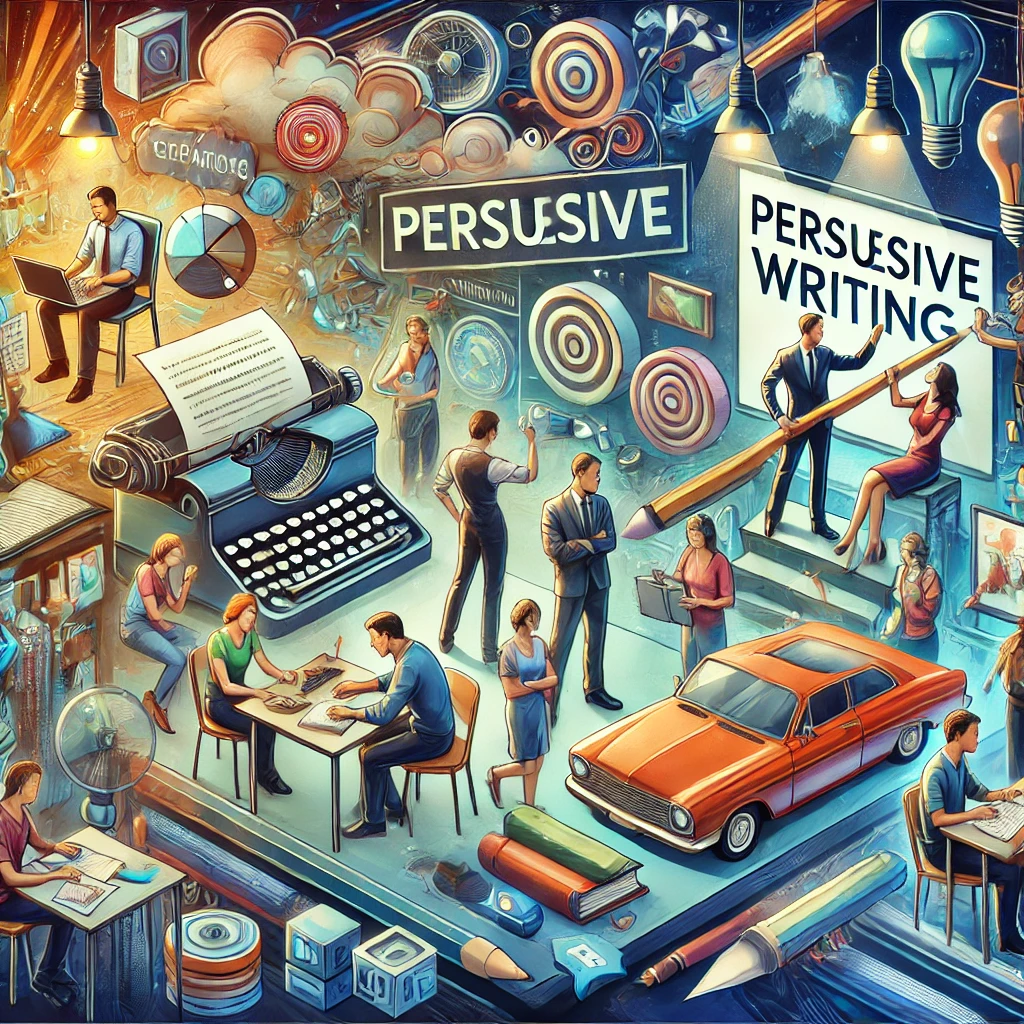
EDITING AND REVISING, FINALIZING DRAFTS, AND REFLECTIVE WRITING

Understanding and applying these key concepts—editing and revising, finalizing drafts, and reflective writing—are crucial steps in becoming a proficient writer. By refining your work through careful editing and revision, producing polished final drafts, and reflecting on your writing process, you will enhance your writing skills and produce high-quality, impactful writing. These practices will not only improve your current writing tasks but also contribute to your long-term development as a writer.
EDITING AND REVISING

Definition:
- Editing: The process of reviewing and correcting your writing to improve accuracy, readability, and coherence. It involves checking for grammar, punctuation, and spelling errors, and ensuring proper sentence structure.
- Revising: The process of reviewing and modifying your writing to improve the content, organization, and overall impact. It involves making changes to the ideas, arguments, and structure of the text to enhance clarity and effectiveness.
Importance:
- Editing and revising are crucial steps in the writing process that help you refine your work, ensuring it is clear, coherent, and impactful. These steps transform a rough draft into a polished piece of writing.
HOW TO EDIT AND REVISE
Step 1: Take a Break
After completing your draft, take a break before editing and revising. This allows you to approach your work with fresh eyes.
Step 2: Read Aloud
Reading your work aloud helps you catch errors and awkward phrasing that you might miss when reading silently.
Step 3: Check for Clarity
Ensure your ideas are clearly expressed and easy to understand. Look for sentences that are vague or confusing and revise them for clarity.
Step 4: Focus on Structure
Check the organization of your paragraphs and the overall flow of the text. Ensure each paragraph has a clear main idea and that your ideas progress logically.
Step 5: Improve Word Choice
Enhance your writing by choosing precise and vivid words. Avoid repetition and unnecessary words.
Step 6: Correct Grammar and Punctuation
Review your writing for grammar, punctuation, and spelling errors. Use tools like grammar checkers and dictionaries to assist you.
Step 7: Seek Feedback
Ask a peer or teacher to review your work and provide feedback. Use their suggestions to make further revisions.
EXAMPLE
- Initial Sentence: “The cat sat on the mat, it was very happy and it purred loudly.”
- Edited and Revised Sentence: “The cat sat contentedly on the mat, purring loudly with happiness.”
FINALIZING DRAFTS
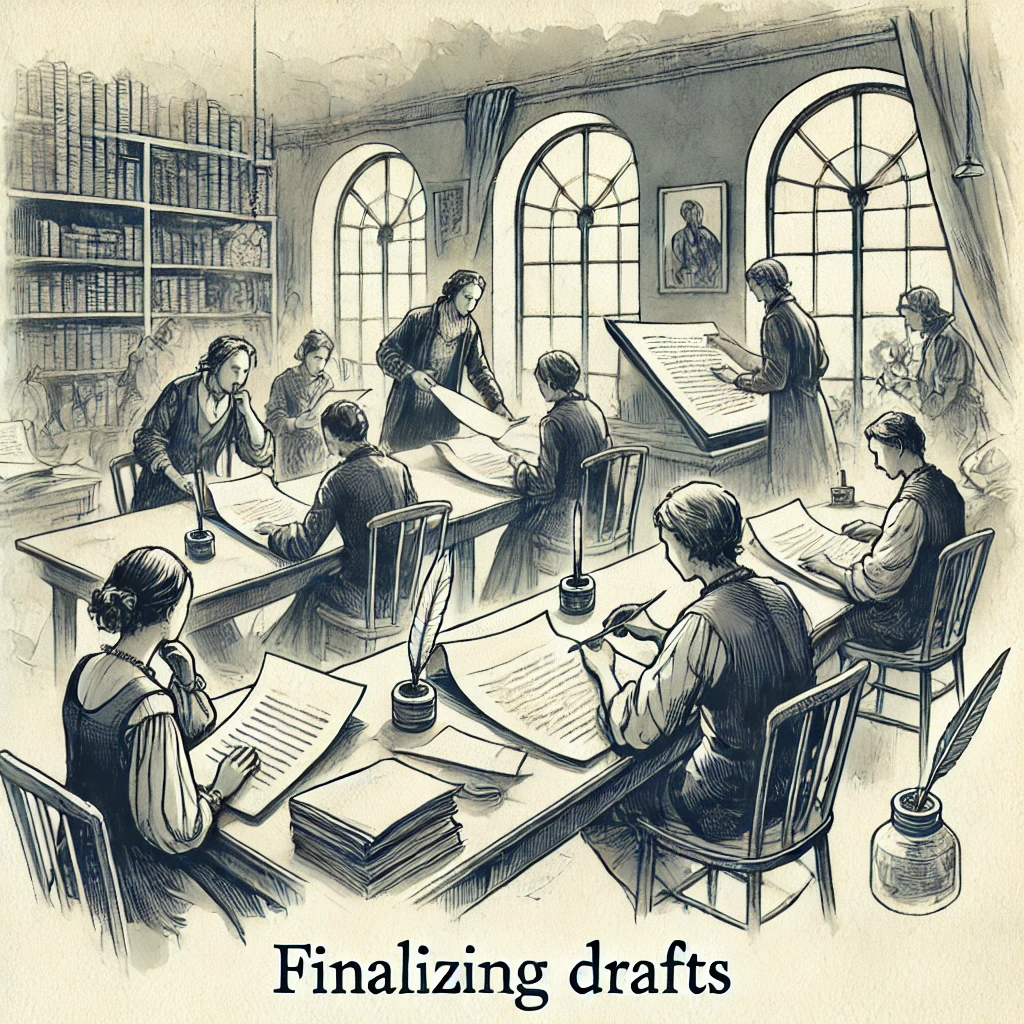
Definition:
- Finalizing drafts involves completing the final version of your writing, ensuring it is polished, error-free, and ready for submission.
Importance:
- Producing a polished final draft is essential for presenting your work professionally. It demonstrates attention to detail, thoroughness, and commitment to quality.
HOW TO FINALIZE DRAFTS
Step 1: Review Feedback
Incorporate feedback from peers, teachers, or mentors into your final draft. Make any necessary revisions based on their suggestions.
Step 2: Conduct a Final Read-Through
Read through your draft one last time to catch any remaining errors or inconsistencies. Focus on the overall flow and coherence of the text.
Step 3: Format Properly
Ensure your document is formatted according to the required guidelines (e.g., MLA, APA, Chicago). Check for proper font, spacing, margins, and headings.
Step 4: Proofread
Carefully proofread your work to catch any minor errors, such as typos or missing punctuation.
Step 5: Prepare for Submission
Make sure your document is saved in the appropriate format (e.g., PDF, Word) and is ready for submission. Attach any necessary appendices or supplementary materials.
EXAMPLE
- Before Finalizing: “After revising and editing the document, the final draft is almost ready to be submitted.”
- Final Draft: “After thorough revision and editing, the final draft is polished and ready for submission.”
REFLECTIVE WRITING: Reflect on Your Writing Process and Progress

Definition:
- Reflective writing involves thinking critically about your writing process, identifying strengths and areas for improvement, and setting goals for future writing tasks.
Importance:
- Reflective writing helps you understand your growth as a writer, recognize patterns in your writing habits, and develop strategies for continuous improvement. It fosters self-awareness and encourages a proactive approach to learning.
HOW TO REFLECT ON YOUR WRITING
Step 1: Analyze Your Process
Think about how you approached the writing task. What strategies worked well? What challenges did you encounter?
Step 2: Identify Strengths and Weaknesses
Reflect on what you did well and what you need to improve. Consider aspects such as idea development, organization, grammar, and style.
Step 3: Set Goals
Based on your reflection, set specific goals for your next writing task. These goals could include improving sentence variety, using more vivid language, or reducing grammar errors.
Step 4: Document Your Reflection
Write a reflective journal or essay summarizing your thoughts. Include specific examples from your writing to illustrate your points.
EXAMPLE
- Reflective Entry: “While writing my research paper, I found that outlining my main points before drafting helped me stay organized. However, I struggled with maintaining a consistent tone throughout the paper. For my next assignment, I will focus on using transitional phrases to improve the flow between paragraphs.”
Learning Activities
Editing and Revising Workshop
Objective: Practice editing and revising writing.
Instructions:
- Draft Review: Review your draft from Day 1.
- Editing Checklist: Use an editing checklist to make improvements.
- Final Draft: Write a final draft incorporating all revisions.
- Class Presentation: Present your final draft to the class and explain the changes you made.

Reflective Writing Task
Objective: Reflect on your writing process and progress.
Instructions:
- Reflection: Write a reflection on what you learned about writing.
- Goals: Set goals for how you will continue to improve your writing.
- Share: Share your reflection with a classmate and discuss your goals.

Integrative Skills Practice
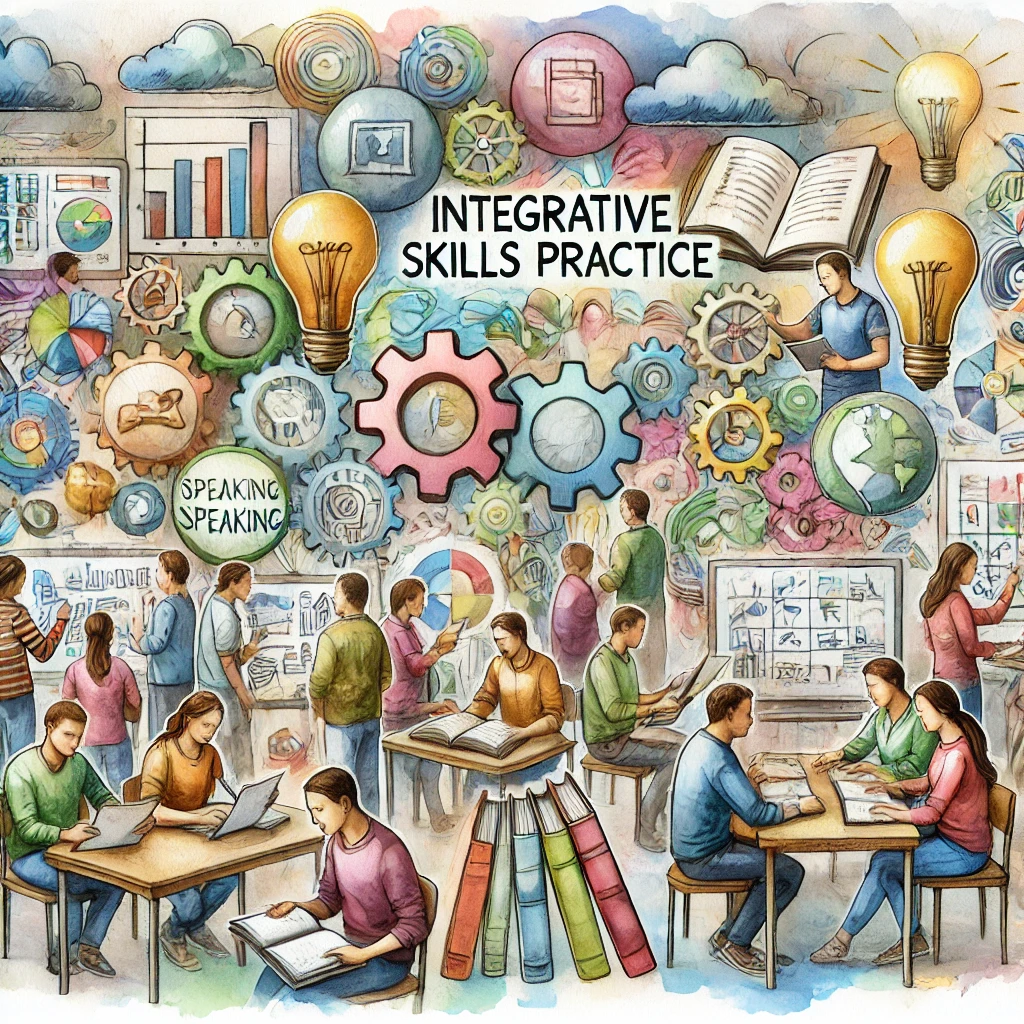
By participating in this review activity, you will have the opportunity to apply your knowledge of conditionals, future tenses, personality adjectives, idioms, listening, and writing skills in an engaging and integrative manner.
Learning Goals
Apply Conditionals: Use zero, first, and second conditionals in real-world scenarios.
Utilize Future Tenses: Incorporate future simple, future continuous, and future perfect tenses in discussions and writing.
Enhance Vocabulary: Use personality adjectives and idioms appropriately in context.
Develop Listening Skills: Practice active listening through interactive tasks.
Improve Writing Skills: Integrate various grammar and vocabulary elements into cohesive writing.
Content
– LINK: 30 Writing Tips to Make Writing Easier
The Ultimate Review Challenge
Part 1: Listening and Writing
Objective: Practice active listening and writing skills by summarizing spoken content.Instructions:
- Preparation: You will listen to an audio clip that includes a conversation filled with idioms, future tenses, and conditional statements.
- Task: As you listen, take notes on key points, idioms, and any conditional or future tense phrases used.
- Writing: After listening, write a brief summary of the conversation, incorporating the notes you took. Ensure your summary uses at least two idioms, one conditional statement, and one future tense phrase.
Example:
- Audio Clip: A discussion between two friends planning a surprise party.
- Summary: “John said that if he finishes work early, he will help Mary prepare for the surprise party. They agreed that by 7 PM, they would have set everything up. John hopes everything will go off without a hitch, and Mary reminds him that actions speak louder than words.”

Part 2: Role-Play
Objective: Use conditionals, future tenses, and personality adjectives in spoken scenarios.
Instructions:
- Scenario Setup: Pair up with a classmate. You will be given a scenario where you need to use specific grammar points and vocabulary.
- Scenario Example: Imagine you are managers planning the yearly team-building event. Discuss the potential activities, using conditionals and future tenses. Describe team members using personality adjectives and incorporate idioms naturally into your conversation.
- Role-Play: Perform your role-play in front of the class, demonstrating your ability to integrate the various elements seamlessly.
Example Dialogue:
- Person A: “If we choose the escape room activity, it will really test everyone’s problem-solving skills.”
- Person B: “That’s a great idea! By the end of the day, we will have built stronger teamwork. Plus, if John joins, his outgoing personality will be perfect for leading a team.”

Part 3: Group Discussion and Decision-Making
Objective: Apply conditionals, future tenses, idioms, and personality adjectives in a group discussion to make a decision.
Instructions:
- Group Work: Form groups of four. You will be given a scenario where you need to make a decision based on given conditions and future plans.
- Scenario Example: Your group is tasked with deciding on a fundraising event for your school. Discuss different ideas, considering future outcomes and using conditional statements. Describe how different team members will contribute, using personality adjectives and idioms.
- Decision-Making: Present your final decision to the class, explaining the reasoning behind your choice and how you incorporated the grammar and vocabulary points.
Example Discussion:
- Group Member A: “If we organize a charity run, it will engage the community and raise a lot of money.”
- Group Member B: “True, but if the weather is bad, we will need a backup plan. By next week, we will have finalized all details.”
- Group Member C: “Emily’s enthusiastic nature will be perfect for promoting the event. And remember, every cloud has a silver lining – even if it rains, we can move the event indoors.”

Part 4: Creative Writing
Objective: Integrate all learned elements into a cohesive piece of writing.
Instructions:
- Writing Task: Write a short story or essay that includes at least two future tense phrases, two conditional statements, three idioms, and three personality adjectives. The topic can be anything of your choice, such as a fictional story, a reflection on a past event, or a future plan.
- Peer Review: Exchange your writing with a partner and provide feedback on the use of grammar and vocabulary.
Example Prompt: “Write about a day in your life ten years from now. Describe your future plans, using conditionals to explain different possibilities. Include idioms and personality adjectives to add depth to your narrative.”

